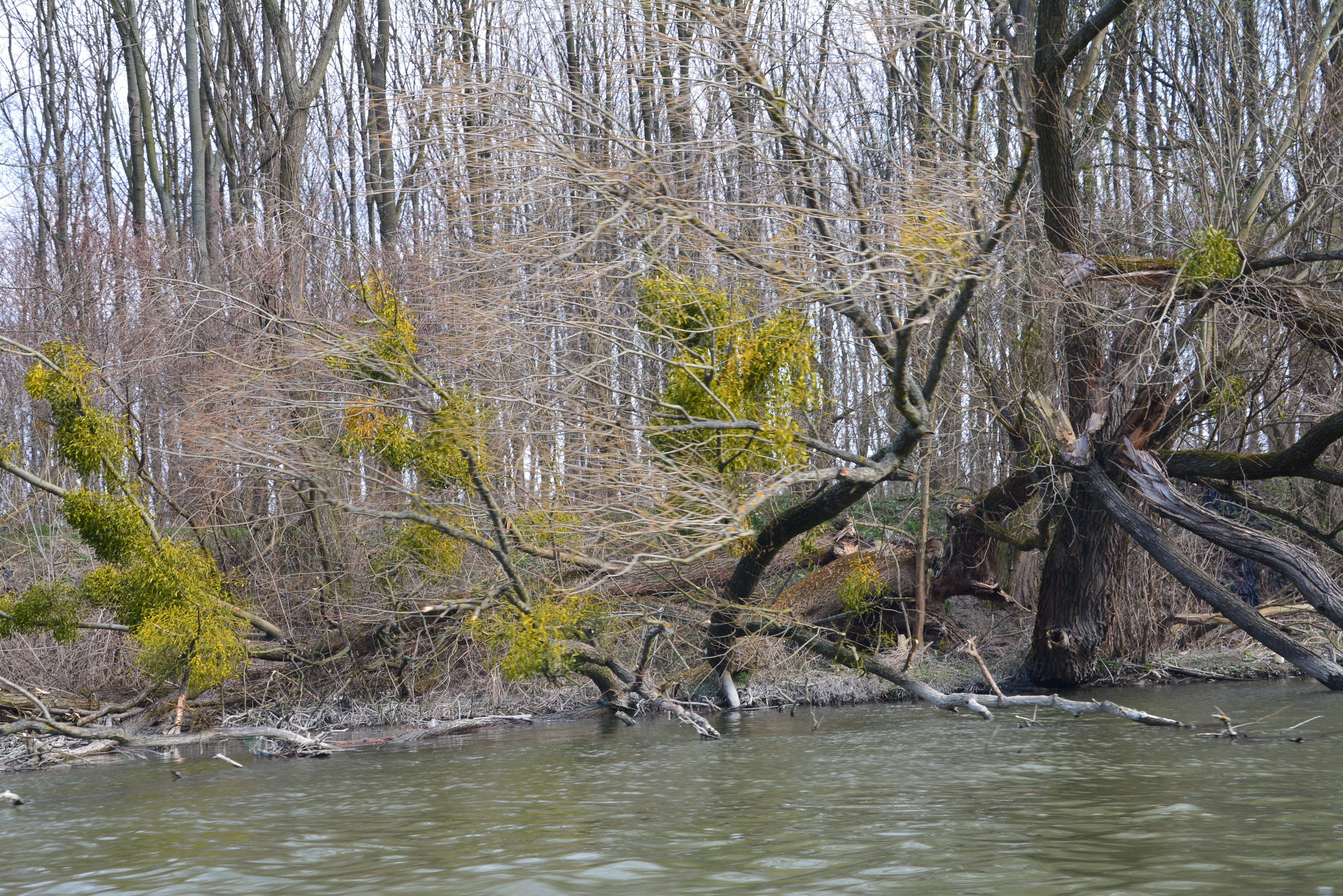Lowland forests
Lowland forests first appeared around the waterway due to the consistent availability of ample amounts of water. The soils have ample moisture and nutrients thanks to frequently flooding. Lowland forests are frequently inundated in the spring months and other flooding periods. Soft hardwood tree species are predominant and as such, these forests are classified as soft hardwood lowland forests. Common tree species include white willow, brittle willow, white poplar, black poplar and alder. Forest stands themselves are very dense and difficult to traverse with shrubbery thriving in the undergrowth, including common dogwood, black elder and hackberry. The crowns of trees are often heavy with English ivy and hops. Another common parasite found in the crowns of trees is the round clumps of Viscum album, more commonly known as mistletoe.
Dense lowland forest line the banks of the river with branches stretching out over the water, which combined with the relatively slow flow of water, gives the Little Danube an atmosphere reminiscent of a tropical rainforest.
Intact lowland forests can only be found currently in a narrow strip along the Little Danube. The trees have been cut and replaced with other, non-native species, such as Canadian poplar. Canadian poplar is a hybrid of black poplar and foreign poplars and is known for their extremely fast growth. Poplar monoculture is easy to spot with regular rows of trees and an identical composition of trees in terms of size and age. Such monoculture planting results in forests with lower species diversity and allows non-native and invasive plant species to penetrate into the area around the river.
